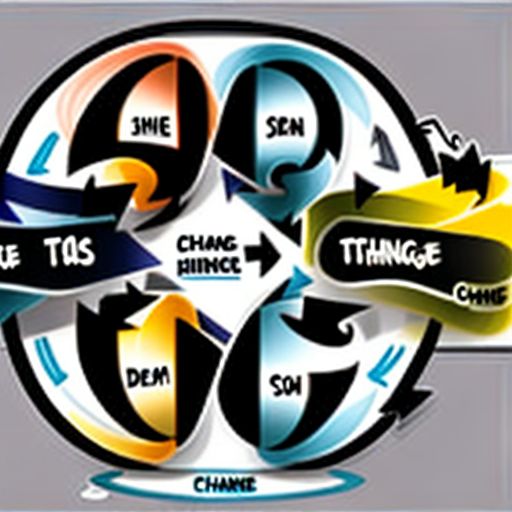Imagine this: you’re steering your company through a significant transition, like implementing a new software system. Everyone is on board at first, excited about the change. But as the weeks go by, doubts creep in, resistance bubbles up, and the initial enthusiasm dwindles. Without a structured approach, even the most well-intentioned change initiatives can falter. That’s where understanding the Change Management Life Cycle becomes crucial.
This guide acts as your roadmap, leading you through each stage of the change process and equipping you with the knowledge to navigate each twist and turn. Let’s dive in!
What is the Change Management Life Cycle?
The change management life cycle is a structured framework that provides a step-by-step approach to guide individuals and organizations through the process of transitioning from a current state to a desired future state. It’s not just about implementing new technology or processes; it’s about effectively managing the people side of change.
Why is the Change Management Life Cycle Important?
Think of the change management life cycle as your secret weapon for increasing the likelihood of successful change adoption. Here’s why it matters:
- Reduces Resistance: By proactively addressing concerns and involving employees in the process, you can minimize resistance and increase buy-in.
- Improves Communication: A structured framework ensures clear and consistent communication throughout the change process, keeping everyone informed and aligned.
- Minimizes Disruption: A well-planned approach helps minimize disruptions to productivity and morale during the transition.
- Increases Project Success Rates: Studies show that organizations that effectively manage change are more likely to achieve their project objectives.
management.snuk.info/wp-content/uploads/2024/07/change-management-lifecycle-stages-669dcd.jpg" alt="Change Management Lifecycle Stages" width="512" height="512">Change Management Lifecycle Stages
Stages of the Change Management Life Cycle
While various models exist, most depict a similar flow. Here’s a breakdown of a common three-stage model:
1. Prepare for Change
- Identify the Need: This stage involves defining the problem or opportunity that necessitates change.
- Develop a Vision: Articulate a clear and compelling vision of the desired future state.
- Plan for Change: Outline the scope, timeline, resources, and key stakeholders involved.
- Build Support: Get leadership buy-in and create a communication plan to engage employees early on.
2. Manage Change
- Communicate Effectively: Provide regular updates, address concerns, and reinforce the benefits of the change.
- Provide Training and Support: Equip employees with the skills and knowledge they need to adapt to the new ways of working.
- Implement the Change: This is the execution phase where the actual changes are rolled out.
- Address Resistance: Proactively identify and address resistance to change through open dialogue and problem-solving.
3. Sustain Change
- Reinforce Positive Behaviors: Recognize and reward individuals and teams who embrace the change.
- Measure and Evaluate Results: Track progress against key metrics to demonstrate the impact of the change.
- Make Adjustments as Needed: Be prepared to make adjustments to the plan based on feedback and lessons learned.
- Embed the Change: Integrate the new ways of working into the organizational culture to ensure long-term sustainability.
Frequently Asked Questions about the Change Management Life Cycle
Here are answers to some common questions people have about this process:
-
What are some common change management models?
Some widely used models include Lewin’s Unfreeze-Change-Refreeze, Prosci’s ADKAR Model, and Kotter’s 8-Step Change Model. -
How can I measure the success of my change management efforts?
Define key performance indicators (KPIs) aligned with your change objectives. Track metrics like adoption rates, employee satisfaction, and business outcomes. -
What’s the biggest mistake organizations make when managing change?
Underestimating the importance of the human element. Change is not just about processes and systems; it’s about people’s emotions, behaviors, and perceptions.
Conclusion
Successfully navigating change is vital in today’s dynamic world. By understanding and applying the principles of the change management life cycle, you can lead your organization and teams through transitions with greater confidence and achieve lasting, positive outcomes.
What are your biggest challenges when it comes to managing change? Share your thoughts in the comments below!
